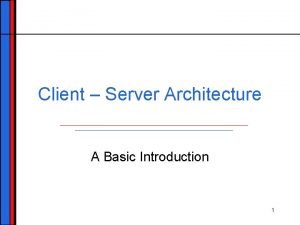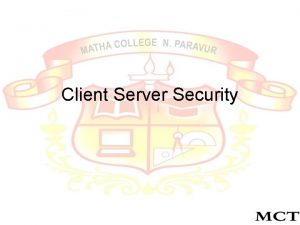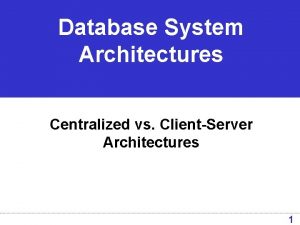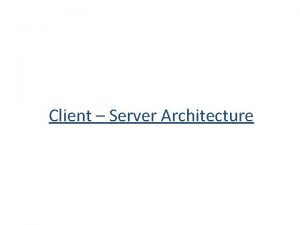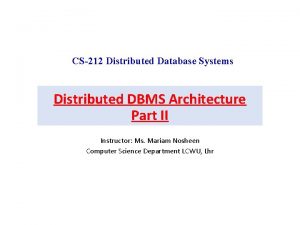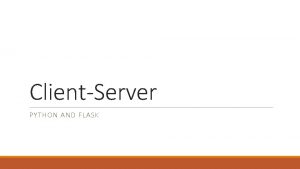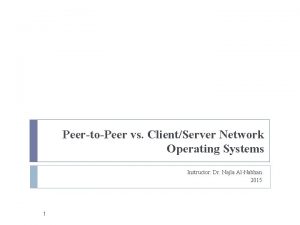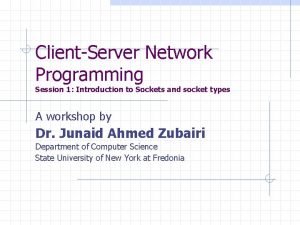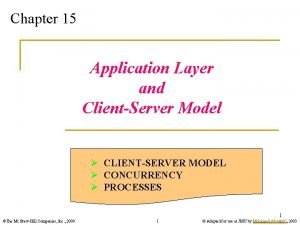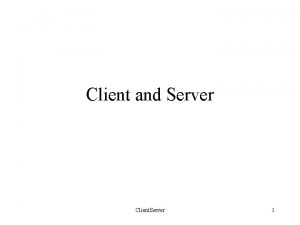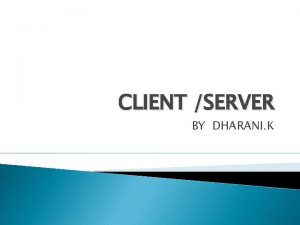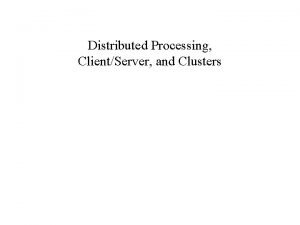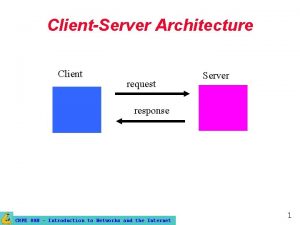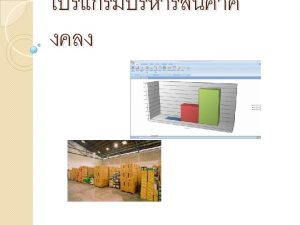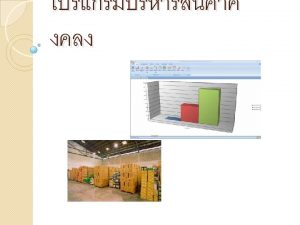Client Server Security Introduction Although clientserver architecture is












- Slides: 12

Client Server Security

Introduction • Although client/server architecture is the most popular and widely used computing environment, it the most vulnerable to breaches in security. • Why? – Distribution of services between client server which render to damage, fraud and misuse. • Security considerations must be in place.

Client and User Security • Clients connect to servers and these connections, if left open or not secured, provide entry points for hackers and other intruders that may use data for evil purposes. • The distribution of services in client/ server increases the susceptibility of these systems to damage from viruses, fraud, physical damage and misuse than in any centralised computer system.

Security Considerations • Security consideration must include: – he host systems – personal computers (PCs) – local area networks (LANs) – global wide area networks (WANs) – Users.

The client • PC desktop as the client machine can easily connect to server and hence pose a great threat to organisational data. • Located in an open place for users and intruders. • Require physical protection. – disk drive locks, – diskless workstations to prevent the loading of unauthorised software and viruses

The Network • Intruders can use network to break into computer systems and their various resources – Can sniff the network to read packet of information such as password, company details, etc. • Use data encryption

Servers • The should be protected with the level of password security applicable to the business. • Encrypt database contents cryptogram or advanced DES (Data Encryption Standard) • To avoid ‘trial and error’ login attacks to database, servers impose long delay to respond to user.

Users • The easiest way to gain illegal entry to the system is by obtaining a valid users ID and password. Password can be discovered when: – User chose short password or can easily be guessed. – User keeps a list of password in a dek drawer. – Share password with another users. – Attacker pretend company IT staff and request password to fix unnamed problem.

Users • To overcome this ensure that you have good security policy, and strong password management must be implemented. • For more details on establishing Client/Server Security Model read given handout (Client_server security issues. doc) available on my page.

Risks Associated with Client/Server Model • Apart from the above framework of Client/Server Model there are other risks accompanied by this model: – Client/Server Development Risks – Workstation Risks – The Network Wire Risk – The DBMS Risk – And other (Read in the given handout (CS_Security. doc)) available on my page

Client/Server Risks • Client/Server Development Risks – Skills of C/Server Development Risks – Rapid Application development Risk. • Work Station Risk – Insecurity of PC on the network • Add third party security products. • PC should be used to work on select application records for few period of time. • The Network Wire Risk – Packet data can be read during the communication process. • Use encryption methods to encrypt data (Userids and password)

Client/Server Risks • The DBMS Risk – C/S computing is based largely on the Database Management Software that supports the applications. • Security professional needs to identify System Manager for DBMS “System” or “Sys” for Oracle. – More read on the handout (CS_Security. doc) available on web.
 Basic concept of client server architecture
Basic concept of client server architecture What is client server security
What is client server security Client server architecture in asp net
Client server architecture in asp net Website client server architecture
Website client server architecture Centralized architecture in dbms
Centralized architecture in dbms Network architecture client server
Network architecture client server Client server architecture
Client server architecture Client server architecture python
Client server architecture python 3 tier client server architecture
3 tier client server architecture What are the features of network operating system
What are the features of network operating system Clientserver network
Clientserver network Clientserver model
Clientserver model Clientserver model
Clientserver model
